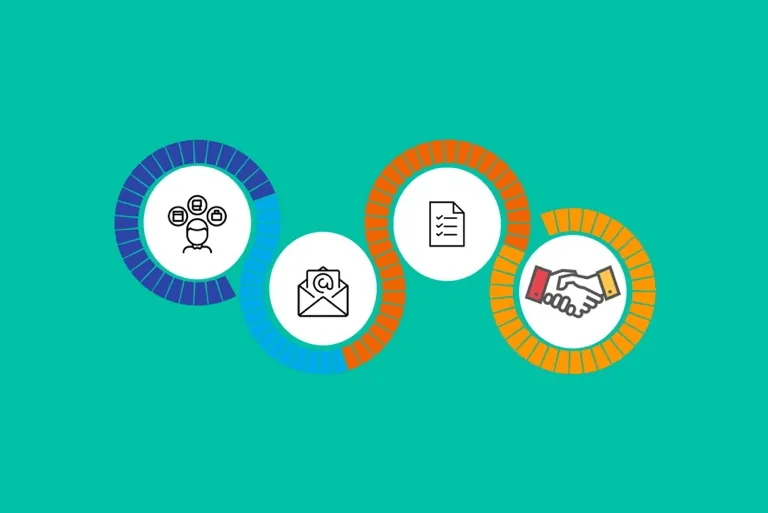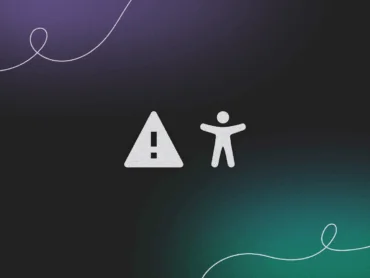Working with a Client – How to Minimize Risk of Miscommunication

Sending and receiving emails is one of the things that we all have to do in our day-to-day business lives. With such a substantial part of our time spent on communication, it makes sense to figure out some key rules and stick to them, making sure you are understood, no piece of information gets overseen an you make a good impression on your client. In this article, I’ll enlist the ways that make this work for me and some tips that will help you be better understood. What should you pay attention to when communicating with your clients using email?
Start at the beginning
Let us begin with what you should pay attention to when starting your relationship with your client. Whatever need they may have when they come to you, before preparing a quote, pay careful attention if you have everything that’s necessary to prepare a reasonable and viable estimate, in order to ensure you and your client are on the same page right from the start. In web development and web design, this usually boils down to:
- Making sure all website functionalities are well-described and agreed upon
- Making sure that the budget and deadline of a project is outlined clearly and agreed upon by both parties
- Making sure that the technologies the website will use are all set (especially in terms of the website’s CMS or the design file format)
- Preparing a carefully written and well thought-through list with everything mentioned above that becomes a point of reference for both sides later on.
This easily translates to other types of services, too. You should make sure you have collected as much information before the start as possible. In most cases, your client will still face some creative decisions during the project, but the better you are at collecting information before the start, the less time you will spend on getting these things precisely right during development, which simply costs money as you could have been focusing your attention elsewhere instead.
Be proactive – think ahead
After the project has been paid for and you are ready to go, you should always keep in mind to minimize any troubles that can come down along the way. If you, your developer or your designer express any doubts about the scope of the project or what your client wants to achieve, write it down and add it to your email. Should this animation be a fade-in or a float-in? Should this element disappear on mobile views?
It’s always better to tackle any issues that may arise, as soon as possible.
You can then be calm about any code rewrites or redesigns that could prolong the development, generate extra cost and be generally hated by everybody involved in your project. This can relate to any kind of functionality placed within the project, and it’s always better to ask then risk the “let’s see what our client says” approach or even, god forbid, hoping they might not notice some problems you see.
Remember that it’s always better to express your doubts and make sure the appropriate decisions are made right away, rather than hide your head in the sand and just pray the issue will go away unnoticed.
Use lists. Always numbered!
It’s a simple thing, but I’ve noticed countless of times when working with my clients that it is counterintuitive for some. If you expect the other part to refer back to you, to answer your questions, to give you their opinions, always use lists.
This way, they will be somewhat forced to either give you the answers you need, ask you back for your opinion or share their preference. The numeration you set while preparing such list will make sure their answers are well-structured and easily found.
These are useful especially if there’s some back and forth involved and there will be a need to discuss some points in detail rather than just simple question-response exchange. From experience, the exchange is often more in line of: question-whatdoyoumean-rephrasing-question-clarification-halfanswerfollowedbyanopinion-followup-awellinformeddecision. We’re all people. You need to account for that.
Most importantly, using numbered lists significantly lowers the risk of something being overseen. If you ask a question and a response doesn’t come; you’ll see a number missing. If you need the back-and-forth, you’re making sure each exchange has their own, neat and numbered “drawer” you can easily follow.
The less emails the better
We’re all busy people – and that’s a fact. It is therefore best to keep communication in chunks rather than send 15 emails a day anytime there’s a need from your team to ask the client something or share some doubt or make a request or anything else.
With larger chunks of combined information, it is much easier to process them all at once rather than get distracted once in every twenty minutes to just say “yeah, this icon is fine”. If there is no significant time pressure, it is most often a good approach to wait for all things to be properly addressed and then compile an email of all things, presented in a nice and organized way. If communication was handled otherwise, while working on several projects at a time, we could all go crazy really fast, and nobody really gets time for that.
Make sure you always understand in full what you are trying to say
As the face of your company, you do not represent just yourself – you also represent an idea. You are the one who sets the standards and who becomes an embodiment of what you stand for – all of your colleagues. Aside from the soft skills being really important, your manners and hiding the negative emotions that may underlie some of your messages, it just makes sense to always research and ask questions to make sure you always understand what you try to convey.
You should try avoiding situations where, in your hand, your email reads “we need the thingamajig for our whatchamacallit to redispose the ringy-tingys for the ultimate approval of mass synergy” or some other combination of these specific words.
You can hide your ignorance behind your email, but in doing so you are choosing to not grow and become just a standard, copy-pasting forward manager which is harmful to your company’s image and just not professional to say the least.
Remember to revise and store useful information
That one may apply only to longer projects, but has saved me countless times. It is good to often go back and revise the written conversations you had with your clients if the project lasts more than 2 or 3 weeks.
Once a week, feel free to sacrifice 15 minutes of your time per project and get up to speed with what was happening. If you find any piece of information that you think you might be needing afterwards – just store it separately in a place you can easily access.
That way, weeks from now, you might avoid a lot of ctrl+f or ⌘+f email searching to stay on top of things and remember the great-yet-unfeasible dream-idea your client have now threw again onto the table, to your surprise and horror. We’re all people! I think I’ve already mentioned that…
Always feedback
My father used to say that it is vitally important to learn through your own mistakes. It is vitally important to learn through others’ mistakes, too.
This is why it is always a good idea to exchange with your clients what aspects of communication could be improved in the future. This can be done either at the end of a project or during it and has a handful of benefits: not only you build trust and make your cooperation smoother and easier for the future, by preventing communication slip ups that could otherwise be repeated.
This needs to be done carefully and sensibly as not to make your client feel as they’re being lectured or straight-up offended as “nobody ever said anything about the fact I start a new email thread each time I write to you!”. Or something like that. I don’t know why I put it in quotes.
Pay attention to the tone you use to communicate
This piece of advice is actually a neat trick I was taught by one of my colleagues some time ago. It makes perfect sense to always try to write one level of formality higher than your client. This way, you appear caring and engaged, yet polite and in control of things. It also allows you to keep your client in check if they do not appreciate the seriousness of the business you are both engaging in and similar enough to your client so that they know you’re on their side.
As humans, most of us have innate mechanisms of so-called mirror neurons that not only make us more empathetic, which in itself is a nice survival tool, in addition to basically making us “like” those who communicate similarly to us.
There are a number of ways to play with this idea: you could occasionally repeat some of your clients’ phrasing or imitate their email structure, reflect their use of emoticons or other such details. When I do this sometimes, I am often faced with similar reflections of my style of writing in return, delivered directly from my clients.
Summary
There are numerous factors you should take into account when organizing your email communication. You should aim to make it work as smooth as possible and in an orderly fashion – preferably by sending as detailed emails as possible and by using lists. It makes sense to always be sure what you are talking about and pay attention to every detail, trying to minimize the risk of miscommunication later on in the project, by not getting your clients’ expectation the first time around.
You need to make sure you understand in full what you are writing about and pay attention to feedbacking your client and learning from your own mistakes. Pay careful attention to the tone you use as it sets the setting and creates your client’s experience and do not be afraid to resemble your clients, as this can only be positively received.


